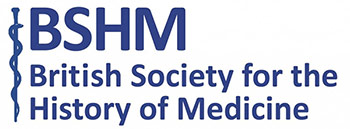I recently presented a webinar for the British Institute of Radiology, looking at the developments of X-ray tubes. These tubes were developed in the 19th century and many contributed, including Michael Faraday and William Crookes. Whilst writing my talk I had several thoughts.
It is easy to look at early apparatus and see it as primitive, and the scientific issues involved appear quite straightforward. However this apparatus, which seems so basic to us was cutting edge science at the time. Little was known about what was actually going on in these tubes, and what the cathode rays actually were. It’s interesting to consider why Röntgen discovered X-rays in 1895, and why they had not been discovered earlier. The tubes used by William Crookes in the 1870s would have produced X-rays, although they were not demonstrated. It was really only a matter of time before X-rays were discovered, however this should in no way diminish the genius of Röntgen. However William Crookes, Phillip von Lenard, or the Americans AW Goodspeed and William Jennings were all in a position to make the discovery. In Röntgen’s famous phrase, after he had observed something unusual “I did not think, I investigated”!

Cutting edge radiology apparatus in 1896, from Practical Radiography by H Snowdon Ward.
The picture shows the induction coil and battery with the X ray tube above
It also very difficult to put ourselves into the 19th century mindset. G W C Kaye writing in his classic X-Rays: An Introduction to the Study of Röntgen Rays (1919) wrote “In the early nineties (1890s), it was not infrequently maintained that the science of physics had put its house in complete order, and that any future advances could only be along the line of precision measurement.” In 1895 Charles Thurstan Holland had expressed similar sentiments regarding surgery. The discoveries of X-rays, followed in 1896 by the discovery of radioactivity by Henri Becquerel turned everything upside down, leading to a revolution in the scientific understanding of both of the world and of ourselves. This is the reason why I find the period from the early 1890s leading up to the First World War so very fascinating. In comparison, whilst things have changed since my student days, the transformation has not compared in scale to that earlier period.
My final thought when preparing for my webinar is as to why some figures are plucked out for fame, and others remain obscure? Coolidge, Crookes, and Röntgen are well known; and yet A Bouwers who made major contributions to radiology remains undeservedly obscure.
Finally a webinar is a great means of communication, and is one the BSHM should utilise.
Adrian Thomas
Past-President BSHM




